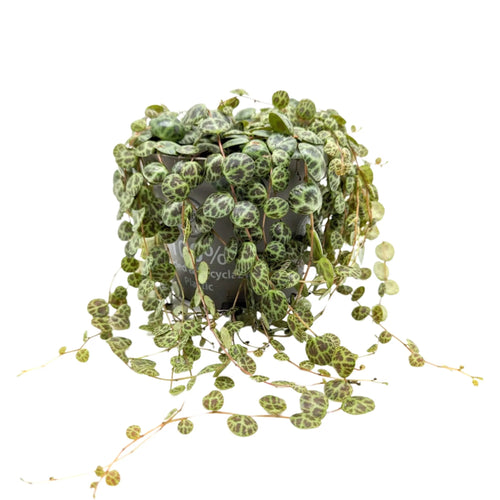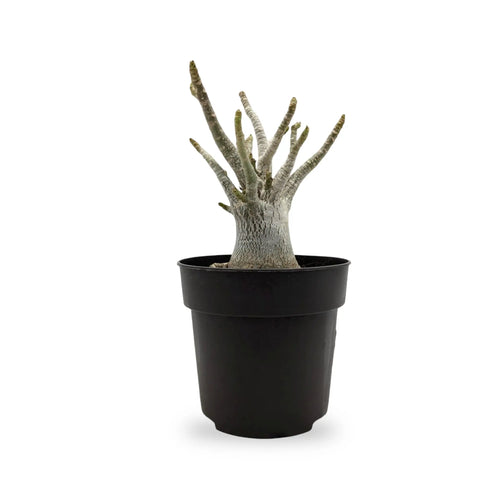Whether you're nurturing a thriving indoor jungle or just beginning your plant journey, styling houseplants in your home can be a design puzzle on its own. Years ago, I managed to kill a cactus—yes, really! But once I saw how even a single plant could breathe life into a dull corner, I began to explore more thoughtfully how to make plants work with my home’s interiors. What I discovered was that houseplants don’t just bring nature indoors—they can solve many design problems while adding beauty, texture, and calm to a space.
Here are some easy, interior-designer-approved tips to help you style your houseplants like a pro, whether you're using real or faux greenery.
1. Create Height with Tall Houseplants
One of the most important principles in design is balance, and vertical height plays a huge role in achieving that. A room often feels "off" when everything sits low. Adding something tall—like a towering plant—draws the eye upward, creating a sense of spaciousness and elegance.
Tall indoor plants bring dimension and presence, particularly in small or narrow rooms. They elongate the space and give a more finished, curated look. Try adding one to a bare corner or next to a low-profile sofa to anchor the space.
Great plant options for vertical interest include:
1. Snake Plant – low-maintenance and grows tall with minimal care.
2. Rubber Plant – offers deep green foliage and stands upright.
3. Corn Plant (Dracaena) – with a tree-like form and bold leaves.
4. Fiddle Leaf Fig – dramatic and full-bodied (a bit fussy but stunning).
5. Majesty Palm – brightens up a room with its airy, feathery leaves.
2. Soften Harsh Lines with Gentle Greenery
Not every home has perfect flow. Sometimes there’s an awkward corner, a too-sharp transition, or too many hard edges in one place. In these situations, houseplants act as gentle buffers. Their organic shapes and trailing vines break up harsh lines and bring softness to the architecture.
Rooms filled with rigid furniture—think square coffee tables, boxy sofas, and sharp shelving—can feel cold or overly structured. A leafy or cascading plant introduces a more natural balance, making the space feel more inviting.
Some favorite soft and trailing plants include:
1. Pothos – ideal for beginners, lush and forgiving.
2. Peperomia – small, textured, and excellent for desks or bookshelves.
3. Heartleaf Philodendron – a trailing beauty with delicate heart-shaped leaves.
4. Jade Plant – a chunky little plant that adds softness and a sculptural vibe.
3. Add Dimension and Movement
Ever walk into a room that checks all the design boxes but still feels… flat? That might be because it’s missing the life that only plants can bring. Houseplants provide movement, dimension, and a touch of unpredictability that no cushion or rug can offer.
Plants bring dynamic energy to a room. Their leaves move, grow, and change with time and care. The subtle shifts they make add a lived-in feel that deepens the connection between you and your space.
When a space feels static, try layering plants at different heights—floor, mid-level, and shelf height—to add that missing depth. Hanging plants are also excellent for this.
4. Embrace Imperfection for a More Authentic Home
In the world of glossy home tours and showroom-perfect spaces, real plants stand out because of their imperfections. A slightly drooping leaf, a yellowed tip, or a stem that’s out of place only adds to a plant's charm. These natural "flaws" give your home character and authenticity.
Sometimes, newly built homes or highly stylized interiors can feel a little too polished. Plants bring grounding and warmth—something wild and beautiful that offsets all that perfection.
Even if you’re using faux plants, aim for ones with irregular shapes or slightly bent stems to imitate that realistic, organic feel. But if you’re going real, don’t be afraid of a few wayward leaves. They tell a story.
5. Accessorize Your Plants for Design Impact
As you refine your plant styling skills, the right accessories will help your greenery shine. While the plant itself is key, what you place it in—and on—matters just as much. Vary your planter materials to introduce texture and tone. Wood, ceramic, terracotta, and metal all bring different design elements to a space.
Use:
1. Stands or stools to give small plants more prominence.
2. Baskets for a cozy, earthy feel.
3. Neutral-colored planters for a minimal look, or colorful ones to make a statement.
4. Pebble trays or layered saucers to manage moisture and double up as décor.
Try grouping plants in odd numbers (like threes) and mixing leaf shapes and pot heights to make arrangements feel more curated and less staged.
6. Choose the Right Spot
Just like furniture and lighting, placement matters. Before you set a plant down in any corner, think about the space from a design perspective.
Use plants to:
1. Fill empty corners that lack function or décor.
2. Balance a low piece of furniture like a bench or console.
3. Draw attention to a window or beautiful architectural feature.
4. Frame doorways or divide zones in open-plan rooms.
If a room feels too cold or stark, a leafy plant near a window can add instant warmth. If a shelf looks too cluttered, place one large plant to simplify the visual chaos.
7. Layer with Other Natural Elements
Houseplants are part of a broader design category: biophilic design, which incorporates nature into our built environments. Pair your greenery with other natural elements for maximum effect.
Think of using:
1. Natural wood tones in furniture or planters.
2. Linen or cotton textiles for curtains and cushions.
3. Stone or clay accessories.
4. Warm, soft lighting to make green tones pop.
When plants are part of a cohesive design language, their impact goes beyond just color. They become part of the architecture of your space.
Final Thoughts
Learning how to style houseplants like an interior designer doesn’t mean you need a degree in design—just a thoughtful eye and a bit of experimentation. Use plants to add height, dimension, softness, and soul to your space. Don’t be afraid to mix sizes, textures, and shapes. Trust your instincts and let nature guide your creativity.
Whether you’re nurturing real plants or working with faux ones, greenery has the power to bring beauty and balance into your home like nothing else. So go ahead—add that wild fern to the corner, let a pothos trail off your shelf, or give your hallway a fresh touch with a tall palm. Your home (and your mood) will thank you for it.










